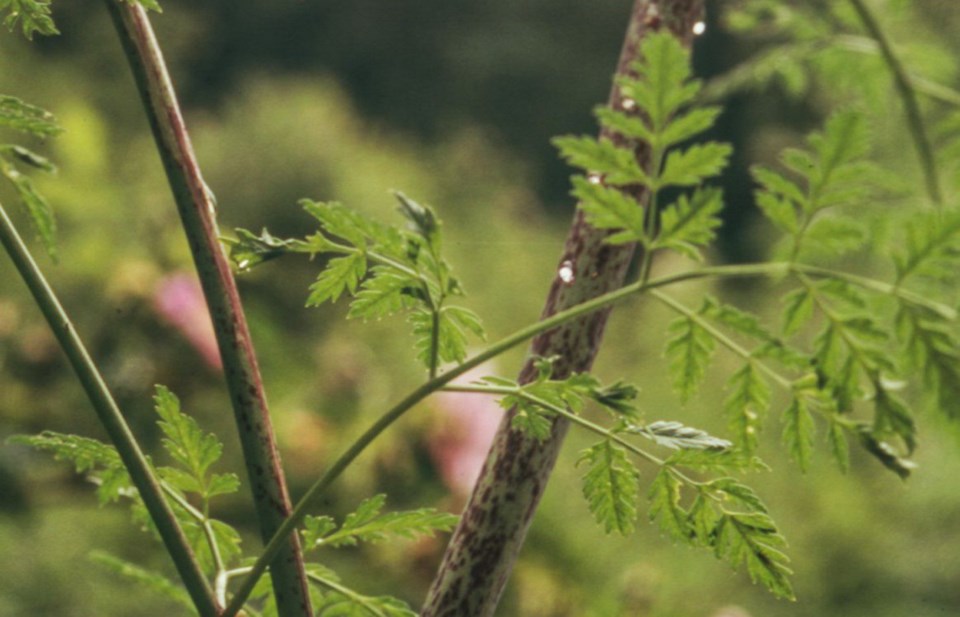Hemlock — infamous as the poison that killed Socrates — is taking root around the capital region, prompting a safety warning.
“It’s important to get it in people’s awareness,” said Ken Marr, curator of botany at the Royal B.C. Museum.
Conium maculatum, an invasive species native to Europe just now coming into full bloom, is potentially deadly to humans and animals if ingested.
Two people spent five days in hospital in 2002 after eating poisonous hemlock, possibly mistaking it for parsley. The couple reported numbness in their mouths and went into respiratory arrest.
The fact that the couple cooked the plant before eating it likely saved their lives, Marr said. When ingested, poisonous hemlock can cause paralysis, which can lead to an inability to breathe and death.
Marr said people shouldn’t eat members of the parsley family unless they sowed the plants themselves and know they are safe.
Poisonous hemlock, identifiable by the purple splotches on its stem, grows in recently disturbed soils and is easily found on construction sites and near developments. It is also often found along streams and ditches and on the borders of pastures and cropland, and it can invade perennial crops.
The plant is related to giant hogweed, another poisonous plant found locally.
All parts of the hemlock plant are poisonous, so people should wear gloves and protective clothing when removing it. Flowering stems should be cut as close to the ground as possible. Young plants can be removed by digging or pulling up the roots.
Marr said he is available to identify plants for the public if they bring in samples or send a photograph via email to kwells@royalbcmuseum.bc.ca.
“We have training and specialized knowledge from being in the field and seeing the plants,” Marr said. “We have a lot of expertise here that’s available to the public.”
Anyone who finds poisonous hemlock on their property is advised to contact the Coastal Invasive Species Committee to report the plant, either by phone at 250-857-2472 or by email at info@coastalisc.com.
For more information on poisonous hemlock and other invasive species, go to coastalisc.com.



